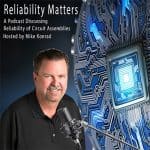
Decline of Quality
Abstract
Greg and Fred discuss the future of quality and reliability professions. The average age of the quality professional is getting older. Fewer people are entering the profession. So, where is the profession going?
ᐅ Play Episode

 Join Steven Giako and Dianna Deeney in a panel discussion of central themes in the books Brilliant! Shuji Nakamura And the Revolution in Lighting Technology and How to Win Friends and Influence People.
Join Steven Giako and Dianna Deeney in a panel discussion of central themes in the books Brilliant! Shuji Nakamura And the Revolution in Lighting Technology and How to Win Friends and Influence People.






 Ask a question or send along a comment.
Please login to view and use the contact form.
Ask a question or send along a comment.
Please login to view and use the contact form.